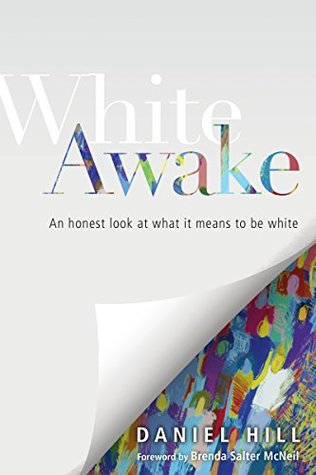More on this book
Community
Kindle Notes & Highlights
by
Daniel Hill
Read between
December 21, 2019 - May 28, 2020
culture plays a direct and significant role in how we learn to see both our neighbors and ourselves. Culture shapes how and
what we see, and how and what we see shapes our everyday behaviors and actions.
“How do I fit into the world?” through the lenses of culture, race, ethnicity, and/or class.
A lack of vision often places us in the same position: sincere intentions but harmful consequences.
Why was the white eighth grader unable to see the deeper meaning of this encounter between her black friend and Mr. Smith?
normalization of white culture.
white culture is the “norm” by which all other cultural identities are evaluated.
white cultural as “normal.”
With white culture serving as the baseline, we then evaluate everyone else’s culture based on the norms we associate with white culture.
What is not overtly stated is how normalized white American culture is.
The theology passed on to us from white forefathers is considered to be the normal, default standard for theology.
Samuel’s peers were engaging in identity development in a more thorough way than they had in their childhood years, and with increased enlightenment came new levels of curiosity.
I’m measuring you against my culturally normal” category.
Their assumption was that their white counterparts held to this conviction as well, but the election results told a different story.
What became clear to everyone during this time was that regardless of where one’s political views landed, the result was that the racial breach between Christians had grown qualitatively worse.
I feel like the tenor of this election gave those with hate in their hearts permission to speak it out loud—maybe to even act on it.
William had just embodied unprocessed, normalized whiteness.
each of us who are serious about a deep and authentic engagement with cultural identity need to contend with the normalization of white culture. No person is exempt.
A metaphor I’ve heard to describe this confusion is that of fish trying to analyze the water they live in; they’re surrounded by it, and it’s impossible to see.
“the ability to walk away.”
When the journey begins to feel like any combination of scary, confusing, disorienting, or even painful, we have a privilege that people of color do not: we can walk away; we can go back to “normal,” if we choose.
we were ready to integrate the need for cultural identity development into our overall understanding of Christian discipleship.
The biblical motivation for engaging in cultural identity.
the Bible provides us with a unique and powerful motivation for pursuing wholesale, identity transformation in Christ.
colorblindness.
Colorblindness minimizes the racial-cultural heritage of a person and promotes a culturally neutral approach that sees people independent of their heritage.
We have all sinned, we are all in need of redemption, we are all equals at the foot of the cross, and through faith we are all one in Christ.
Colorblindness minimizes the role cultural identity played in the story of many Old Testament heroes.
Colorblindness minimizes the incarnation of Christ.
Jesus came to earth embodied within a specific cultural identity.
To be colorblind would be to risk missing some of the deepest meanings of Christ’s incarnation.
Colorblindness minimizes the overtones of cultural identity throughout the early church.
Colorblindness minimizes the ways God recognizes and celebrates cultural diversity.
God recognizes that different cultures reflect different honors and gifts, and these gifts are for the glory of God.
eliminating Christian colorblindness, but let me finish with the most important of all: sin.
The ongoing work of Christian growth is to pursue redeemed life in God and to participate in the life of Christ in such a way that we no longer allow sin to reign the way it did in our old self
Therefore it would be naive for devoted followers of Jesus to believe they can pursue the transformation of identity in Christ without also acknowledging the power of sin as evidenced by the impact of race.
remind us of how pervasive and normalized white culture is.
Did these not play a role in shaping our views on race and culture? Do these also qualify as encounters with race?
But we’re taught to internalize white culture as normal, so we’re unaware of the profound ways race shaped us during our early years.
Transformation rarely comes easily.
“Daniel, you may be white, but don’t let that lull you into thinking you have no culture. White culture is very real.
ethnicity and race.
Ethnicity refers to the way people identify with each other based on commonalities such as language, history, ancestry, nationality, customs, cuisine, and art.
race is a social construct (that is, it is created by human beings, not God)
In fact, they represented a wide range of cultural, ethnic, and economic differences, and the idea of viewing them through a single racial lens would have been outlandish.
The horror of slavery was a major moral crisis for America, but instead of acknowledging the sin of that enterprise, we went in the opposite direction. We began to deemphasize the differences within various European ethnicities and began to describe white people as a human collective that was inherently superior to people of color.
slavery had a dramatic impact on the social construction of race and specifically on what we now consider to be white.
Though there had been no collective sense of white before slavery, that changed quickly.
How the Irish Became White.


